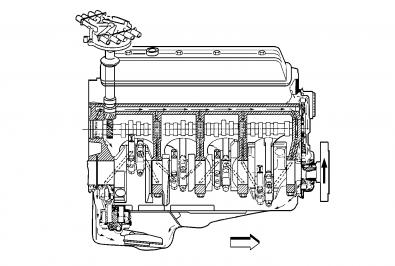novamodeler3
TYF Newbie
Hello!
Brand new to the forum and just as new to the 5.7 Vortec. I want to gain some general information to help me make a decision regarding a tune and future performance mods. Currently 206k miles on my hoe, and recently scanned and showed a P0420 and P0430 codes for catalyst issues.
Now, I'm an old school carburetor guy, and have VERY basic knowledge on the ECM systems with the sensors, and valves, and (IMO, no offense) conehead computer stuff that make these run. But I'm ignorant to the systems.. lol
I'll start by telling you the initial plans for the truck, and ask that y'all chime in with feedback, experience, suggestions..
I've read about the spider line swap, and it makes perfect sense to me over the factory setup. I've noticed in the last 1000 miles, the truck has been laying down considerably when I put my foot into it, it takes a crank or two to start up cold, and has a lot of shifting hesitation.. and I'm not sure if it is the cats stopped up, or the poppet valves stopped up, or a combo of the two. But Initially, I am going to replace the cats with an OEM product, and do the spider line swap. But here's my question: South Carolina doesn't have emission laws, so should I just ditch the cats altogether? And with this comes the o2 sensors justa danglin in the wind, sending bad signals to the fuel dilevery system, wrecking my mileage.. OR... Going with a Hi-Flow Cat, OEM? HELP!!
I'm primarily a highway driver, averaging 65mph at 1600 rpm, with minimal stop and go in-town driving. I hit the occasional trail for some off-roading, and the seldom mud hole..
And with all this, comes the questions about a tune.. I emailed Black Bear and gave em some information about the truck and my future mods as I've said above, but I just need some more opinions from some guys who have more know-how about these powerplants..
I appreciate the help, and look forward to learning the ins-and-outs of these engines!
Thanks!
-Justin
Brand new to the forum and just as new to the 5.7 Vortec. I want to gain some general information to help me make a decision regarding a tune and future performance mods. Currently 206k miles on my hoe, and recently scanned and showed a P0420 and P0430 codes for catalyst issues.
Now, I'm an old school carburetor guy, and have VERY basic knowledge on the ECM systems with the sensors, and valves, and (IMO, no offense) conehead computer stuff that make these run. But I'm ignorant to the systems.. lol
I'll start by telling you the initial plans for the truck, and ask that y'all chime in with feedback, experience, suggestions..
I've read about the spider line swap, and it makes perfect sense to me over the factory setup. I've noticed in the last 1000 miles, the truck has been laying down considerably when I put my foot into it, it takes a crank or two to start up cold, and has a lot of shifting hesitation.. and I'm not sure if it is the cats stopped up, or the poppet valves stopped up, or a combo of the two. But Initially, I am going to replace the cats with an OEM product, and do the spider line swap. But here's my question: South Carolina doesn't have emission laws, so should I just ditch the cats altogether? And with this comes the o2 sensors justa danglin in the wind, sending bad signals to the fuel dilevery system, wrecking my mileage.. OR... Going with a Hi-Flow Cat, OEM? HELP!!

I'm primarily a highway driver, averaging 65mph at 1600 rpm, with minimal stop and go in-town driving. I hit the occasional trail for some off-roading, and the seldom mud hole..
And with all this, comes the questions about a tune.. I emailed Black Bear and gave em some information about the truck and my future mods as I've said above, but I just need some more opinions from some guys who have more know-how about these powerplants..
I appreciate the help, and look forward to learning the ins-and-outs of these engines!
Thanks!
-Justin

